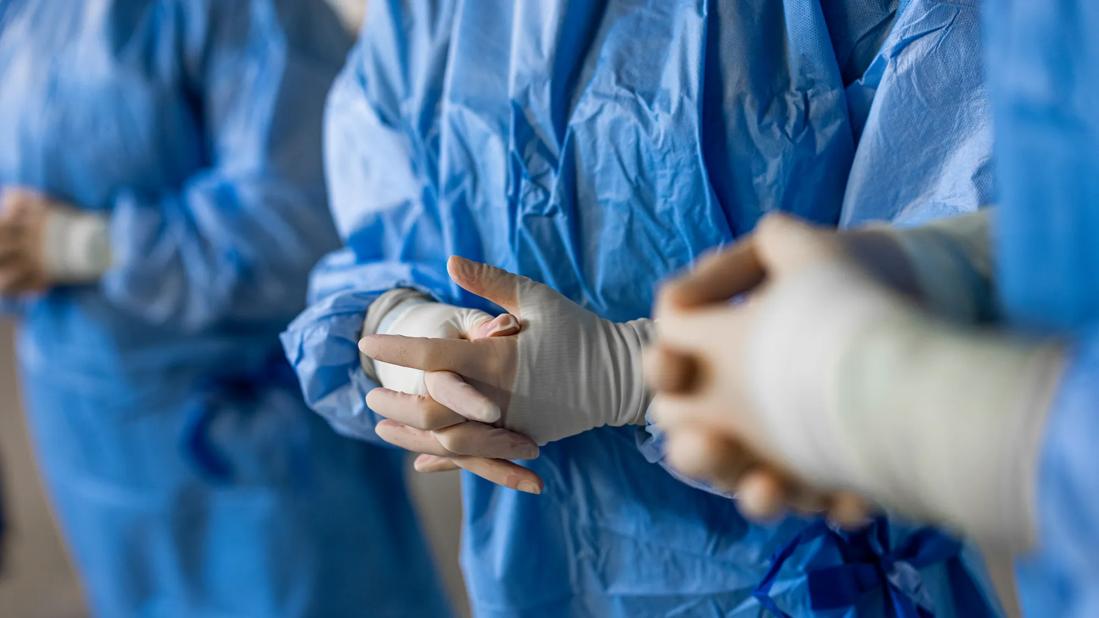A Q&A with Simrit Sandhu, Chief Supply Chain Officer

How does a top U.S. hospital manage a severe shortage of critical supplies through a global crisis known as COVID-19? With shortages in personal protective equipment (PPE) and other critical supplies exacerbated by breaks in supply chain, protecting healthcare professionals required ingenuity and steady leadership. Simrit Sandhu, Cleveland Clinic’s Chief Supply Chain and Support Services Officer, worked tirelessly alongside her team armed with data and analytics to guide every action. Her strategy was to build strong relationships both internally and externally, which created remarkable bonds and brought relief throughout the health system. It turned out that trusting her team while providing clarity in finding solutions were key to getting through the crisis.
Advertisement
Cleveland Clinic is a non-profit academic medical center. Advertising on our site helps support our mission. We do not endorse non-Cleveland Clinic products or services. Policy
Sandhu has received accolades for achievements in global supply chain management for good reason. Since joining Cleveland Clinic in 2007, she has driven strategy to reduce cost and find value in selecting and managing products for the multi billion dollar healthcare system. She is recognized for keeping patient safety front of mind with the implementation of a new system called WaveMarkTM, which alerts caregivers on expiring products and prevents them from ever reaching patients. She led her team through dynamic transformation, with Cleveland Clinic receiving national recognition in 2018 from Gartner as the No. 1 Healthcare Supply Chain.
CQD spoke with her to get her perspective on leading her team through the early days of the COVID-19 pandemic.
I pride myself on leading by example. Throughout the start of the pandemic, I showed up every day to our service center and supported our caregivers. I made sure to ask for help and enlisted an army of internal stakeholders, as well as external government stakeholders, to certify we were doing everything we could to provide the necessary products, supplies and equipment for our caregivers and patients.
Especially during this critical time, I was able to leverage my relationships with national leaders to learn about best practices, while sharing ours in return. I continued to educate up and down the organization, explaining the dynamic of raw material, labor and finished good assembly. This education was paramount in making informed and proactive decisions. We maintained focus on sustainable solutions, not heroics.
Advertisement
My proudest moments were hearing my team as they led their teams through these unprecedented times. Along with Philanthropy, Innovations and Surgical Operations, we came together to develop a buy-make-donate-disinfect work stream. To see the cross-functional collaboration on this project, which was driven by my team, would make any leader proud!
Personally, I was most impacted by seeing our caregivers selflessly battling on the front lines of this virus, while helping to manage the utilization of supplies. It truly was remarkable to see caregivers, patients and the community come together to help each other and keep one another safe.
We learned the importance of community and industry partnerships to create appropriate redundancy and resiliency in the supply chain. The enablement of block chain is key to creating transparency in this market. Block chain involves using technology to connect data assets across supply chain ecosystem stakeholders.
Within context of the global supply chain, we need to focus on the “last mile.” This means improving emergency preparedness in our local ecosystems by leveraging partnerships. We need to incorporate our buy-make-donate-disinfect strategy at the local level, versus competing across entities for the same ideas and products. This is what we will continue to work on moving forward.
Leadership programs developed by Cleveland Clinic encourage innovation and create projects that have positive institutional impact. For more information on Cleveland Clinic Global Executive Education, contact the team online at clevelandclinic.org/execed.
Advertisement
Advertisement

Patients report improved sense of smell and taste

Clinicians who are accustomed to uncertainty can do well by patients

Unique skin changes can occur after infection or vaccine

Cleveland Clinic analysis suggests that obtaining care for the virus might reveal a previously undiagnosed condition

As the pandemic evolves, rheumatologists must continue to be mindful of most vulnerable patients

Early results suggest positive outcomes from COVID-19 PrEP treatment

Could the virus have caused the condition or triggered previously undiagnosed disease?

Five categories of cutaneous abnormalities are associated with COVID-19